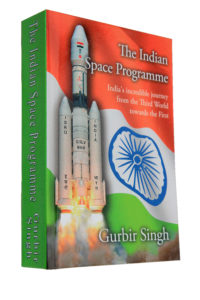 If you follow this podcast, you will notice a very long pause since the previous episode. I have been busy writing my second book, the Indian Space Programme which is now finally complete. So I am now back to my familiar but irregular podcasting mode.
If you follow this podcast, you will notice a very long pause since the previous episode. I have been busy writing my second book, the Indian Space Programme which is now finally complete. So I am now back to my familiar but irregular podcasting mode.
The growth in the space sector now widely estimated to be worth annually over 300 billion USD globally. It is primarily being driven by the commercial sector. The bulk of the expenditure is in satellite television, communication services, Earth observation and businesses enabled by global navigation. In the past, it was technological development driven by the national space programmes that triggered the development of low-cost consumer products. Today it’s the other way round. Sophisticated manufacturing methods and high public demand for digital products have produced low-cost consumer devices which without too much modification can be qualified for use in space. This is particularly true in the sudden growth of the small satellite market.
In this episode, I speak with Dr Rajan Bedi the founder and CEO of Spacechips, a UK based company offering CEO of Spacechips Ltd, which provides industrial R&D and space electronics design consultancy and training services to manufacturers of satellites and spacecraft around the world. I was intrigued by Rajan’s 2017 blog post entitled “Using and selecting COTS components for space application”. In this episode, I want to understand to what extent spacecraft manufacturers can buy components for spacecraft from the high street.
Podcast: Play in new window | Download (23.9MB) | Embed
Subscribe: Apple Podcasts | Spotify | RSS | More


